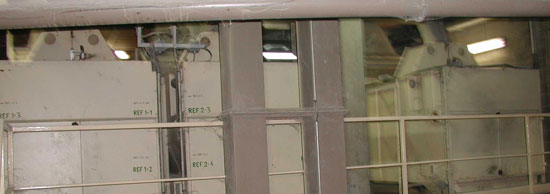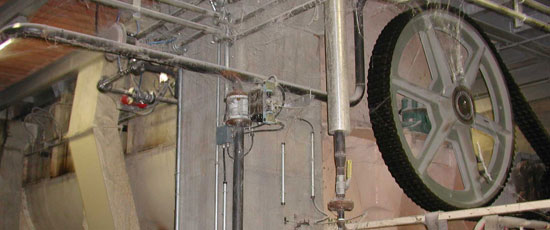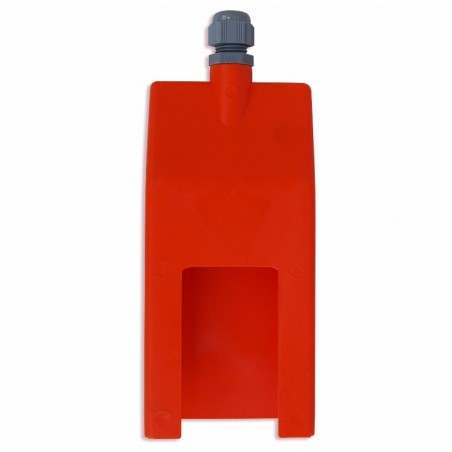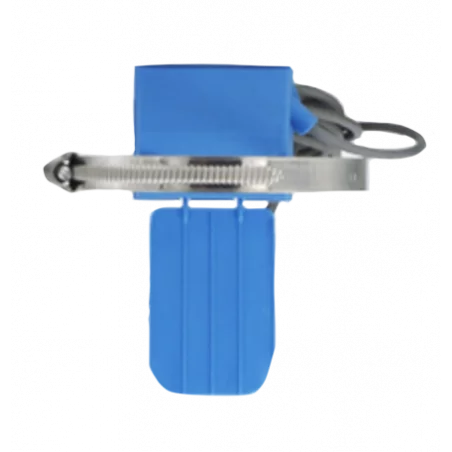Pigs can become infected with Salmonella from contaminated farms, infected pigs, rodents, birds, etc.. and also through contaminated feed. The large number of input sources and transmission of infection that coexist throughout the production phase of the animals makes it particularly difficult to assess the actual risk of each of these factors especially with the fact that their importance may vary from farm to farm and over time. Hence we cannot rule out feed as a risk factor in the epidemiology of salmonellosis and therefore, control of pathogens in feed should still be considered an essential component of any control program for swine salmonellosis.


What levels of contamination do feed and raw materials present?
Salmonella can be isolated both in raw materials of vegetable and animal origin, especially animal origin, such as in feed since in general the contamination present in such products is rather reduced.
Table 1. Levels of Salmonella contamination in raw materials of animal and vegetable origin, 2007-2009 (EFSA, 2011).
| Total in the EU | 2009 | 2008 | 2007 | |||
| N | % positive | N | % positive | N | % positive | |
| Fishmeal | 1,362 | 0.7 | 1,688 | 2.1 | 3,123 | 2.9 |
| Meat and bone meal | 6,015 | 1.4 | 8,399 | 1.0 | 11,270 | 0.7 |
| Cereals | 3,633 | 0.4 | 5,262 | 0.2 | 5,489 | 0.4 |
| Seed oils and derivatives | 10,720 | 1.3 | 18,786 | 1.8 | 22,885 | 2.2 |
Only data of sample sizes ≥ 25 was presented.
Raw materials of plant origin can be classified according to their risk of Salmonella contamination (highest to lowest): oilseed meals> wheat bran and other cereal products> cereal. While soybean meal is still of the most polluted in recent years, the level of pollution has been declining in a significant way, and has gone from 5.7% in 2004 to 1.3% in 2009.
Table 2. Contamination levels of Salmonella in compound feed for pigs, 2007-2009 (EFSA, 2011).
| Feed | 2009 | 2008 | 2007 | |||
| N | % positive | N | % positive | N | % positive | |
| Swine feed | ||||||
| Austria | - | - | 63 | 1.6 | - | - |
| Belgium | 79 | 2.5 | 56 | 3.6 | - | - |
| Czech Republic | 372 | 0 | 446 | 0 | 180 | 0 |
| Finland | 834 | 2.3 | 231 | 0 | 274 | 0 |
| France | 76 | 1.3 | - | - | 597 | 1.0 |
| Germany | 219 | 1.8 | 412 | 0.2 | 107 | 0 |
| Hungry | 210 | 1.4 | 159 | 0 | - | - |
| Italy | - | - | 176 | 2.3 | 121 | 2.5 |
| Luxembourg | - | - | 32 | 3.1 | 56 | 3.6 |
| Holland | 2,842 | 0.2 | 2,543 | 0.3 | 2,898 | 0.1 |
| Poland | 577 | 1.0 | 851 | 1.2 | 1,853 | 1.6 |
| Portugal | 27 | 0 | 78 | 2.6 | 33 | 3.0 |
| Romania | - | - | - | - | 60 | 0 |
| Slovakia | 208 | 0 | 353 | 0.3 | 173 | 0 |
| Slovenia | - | - | - | - | 51 | 5.9 |
| Spain | 35 | 2.9 | 71 | 1.4 | 54 | 3.7 |
| Total swine feed (11 member states in 2009) | 5,479 | 0.7 | 5,471 | 0.6 | 6,457 | 0.8 |
| Norway | - | - | 58 | 0 | 79 | 0 |
| Switzerland | 31 | 0 | - | - | - | - |
In 2009, the percentage of contaminated feed in Spain turned out to be the highest (2.9%) of the EU. But a cautious interpretation of these results is necessary because it is official data and most likely not representative of the feed market in each country.
Further information on the level of Salmonella contamination of feed in Spain can be obtained from the national level MARM study between the years 2006-2007. While levels of contamination in raw materials and feed stood at 3.5% and 3.2%, respectively, in samples of ambient dust of the factories it rose to 12.5%. The high contamination found in samples collected from the environment of the facility is remarkable, a result that clearly emphasizes the need to improve cleaning and disinfection of factories in order to reduce the presence of this bacterium with great ability to persist in dry environments. Salmonella has been isolated in samples of feed and dust stored for up to 3 and 4 years at room temperature.

Is Salmonella contamination in feed really low?
We should note that although the level of contamination is usually low, this value may be underestimated for several reasons:
-
Difficulty in obtaining a representative sample.
These are products with many batches and high volume and often, also, where the emergence of pockets of contamination occur because the pathogen is not distributed evenly.-
Practical recommendations:
- Samples that include dust and fine particles form a more representative sample since they behave like small subsamples.
- Strict control of the points considered at risk: entrances and raw material silos, elevators, filters, mixers, granulators, coolers, finished product silos, etc… pay special attention to the corners.
-
Practical recommendations:
-
Limited sensitivity (or detection capability) of analysis methods.
In the final feed Salmonella is often found in small numbers (described levels <1 CFU / g) and also badly damaged or weakened after the heat treatment applied.
→ Practical recommendation: sensitivity is enhanced when analyzing samples that include dust and fine particles as opposed to samples of finished feed.
-
Temporal variability of pollution.
The contamination levels of raw materials can vary not only in terms of the origin of source or provider, but also by time of year, mainly due to increases in atmospheric moisture.
→ Practical recommendation: perform periodic sampling.

What is the epidemiological significance of Salmonella in feed?
In general, isolates obtained in the feed do not usually correspond to those most frequently found in humans and animals. In the same MARM study mentioned above, only 0.3% of the studied samples isolated Salmonella serotypes were consistent with those that most affect people (Enteritidis, Typhimurium, Infantis, Virchow and Hadar). However, several studies have identified the same strains found in raw materials and feed and then the animals and even in their final products. An example of the predominant serotype in raw materials and one which was transmitted vertically through the entire chain is Salmonella Agona. It entered the U.S. through imported fish meal in the 70's and has now become one of the most prevalent serotypes in humans in the country.
As a final note, this little correspondence between serotypes of animals and those of feed may also be due to issues related to the culture technique employed. We have seen that certain serotypes are more competitive than others so they can be enhanced by culture techniques currently employed. Thus the growth and subsequent isolation of serotypes Typhimurium or Enteritidis would be more favored than in the case of "exotic" serotypes that often contaminate feed.
→ Practical recommendation: Every Salmonella contamination should be monitored since all Salmonella are potentially pathogenic.
What risk does contaminated feed intake pose to animals?
It is very likely that, nowadays, the role that contaminated feed-issued at the factories plays in the presence of infections on pig farms in our country (with very high levels of prevalence) is quite small compared with that of many other factors associated with lack of hygiene and biosecurity measures on a number of farms. It is clear that the occasional mismanagement of feed once it leaves the factory until it reaches the farm and distributed to animals (lack of cleaning and disinfection of trucks, open silo tops and poor maintenance, dirty feeders, etc..) significantly influences recontamination.






